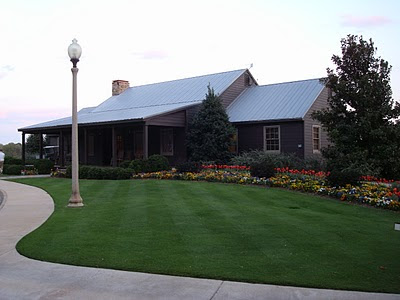We have been accomplishing much of the preparations needed to get the course in playing condition. The greens will be open for play on Thursday this week. We mowed the greens today and will cut the cups on the greens first thing tomorrow. There is still lots to do, but some things are beginning to take shape.
The first time cleaning the bunkers is always a time consuming. The process involves raking the grass face, then picking up all debris from the face of the bunker and out of the bunker itself. Then we check the sand depth and move sand around if it is necessary to provide a consistent depth. We use metal rakes to loosen the sand after settling through the winter. This process will take more than one day to finish.
The irrigation system was charged today. We do not foresee needing it for a few weeks, but it is nice to get it going and make any repairs that are usually need to start the year. This will be a good opportunity to continue our irrigation auditing that we started last year. More on that in a later post.
A few of the tees were mowed today. The rest will be done tomorrow. We also plan to mow the fairways and approaches tomorrow as well.
We do not have a date set yet to open the driving range. We do want the temperatures to be warmer to allow for better divot recovery.
The first time cleaning the bunkers is always a time consuming. The process involves raking the grass face, then picking up all debris from the face of the bunker and out of the bunker itself. Then we check the sand depth and move sand around if it is necessary to provide a consistent depth. We use metal rakes to loosen the sand after settling through the winter. This process will take more than one day to finish.
The irrigation system was charged today. We do not foresee needing it for a few weeks, but it is nice to get it going and make any repairs that are usually need to start the year. This will be a good opportunity to continue our irrigation auditing that we started last year. More on that in a later post.
A few of the tees were mowed today. The rest will be done tomorrow. We also plan to mow the fairways and approaches tomorrow as well.
We do not have a date set yet to open the driving range. We do want the temperatures to be warmer to allow for better divot recovery.





























